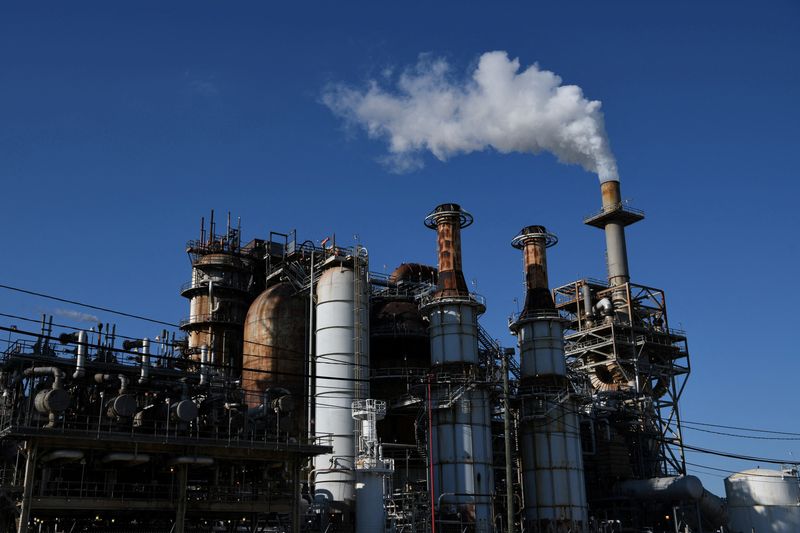By Erwin Seba
HOUSTON (Reuters) – Chemical maker LyondellBasell Industries (NYSE:LYB) on Friday detailed its long-announced plan to permanently shutter its 263,776 barrel-per-day (bpd) Houston oil refinery in the first quarter of 2025.
The planned closing marks the latest in a wave of U.S. refinery closures as motor fuel demand is expected to peak this decade and decline under pressure from renewable fuels and electric vehicles.
In January, one of the facility’s crude distillation units (CDU) and coker production train will shut, Lyondell refining chief Kim Foley told analysts on a call to discuss third-quarter results.
In February, the second CDU-coker production train, which supplies the gasoline-producing fluidic catalytic cracker (FCC) and ancillary units, will shut, ending motor fuel production, Foley said.
For the fourth quarter of this year, Lyondell plans to run the refinery at 90% of its capacity.
Lyondell originally planned to shutter the Houston refinery in 2023, but extended its life due to strong fuel margins. Last month, rival U.S. refiners Phillips 66 (NYSE:PSX) and Valero Energy (NYSE:VLO) announced plans to close one California refinery and put two others under review for possible closure in that state.
Phillips 66’s 139,000-bpd Los Angeles refinery will cease production by the end of 2025.
“The refinery, if you think back historically, was originally designed to process in-state California crude production, and that has declined by about 75%,” CEO Mark Lashier said.
Valero CEO Lane Riggs said last month “all options are the table” for the company’s 91,300-bpd Wilmington and 145,000-bpd Benicia, California, refineries. New California laws for maintaining emergency inventories would penalize operators and make their refineries unprofitable, Valero said in a filing with the U.S. Securities and Exchange Commission.
In the last wave of U.S. refinery closures, which occurred between 2017 and 2022, nine crude oil refineries with a combined capacity of 1.2 million bpd were idled or converted to production of renewable fuels.

